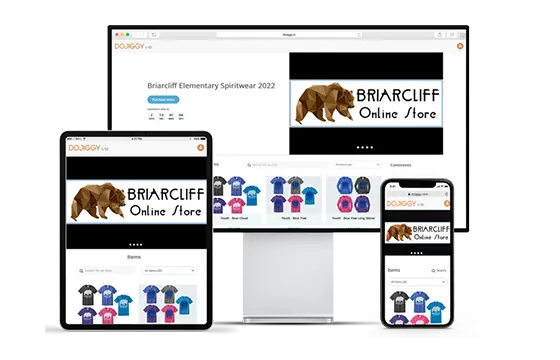
Giving to charity is a wonderful way to help those in need. But what happens when donors stop giving? One of the most important aspects of any nonprofit organization is its donor base and donor retention strategy. With so many potential donors out there, it’s imperative to keep them engaged and interested in your cause and ensure your fundraising campaign is not only a one-time thing.
So, what do you do when your donors start dropping off your nonprofit’s radar? This blog will explore the top reasons for donor disengagement and how to avoid them.
Identify the Why
Before you try to reactivate a donor, it’s vital to identify why they stopped giving in the first place. Every donor has their reasons for disengaging with your cause or organization. Make sure to take the time to think about this before attempting to resolve it.
With this in mind, we’ll be exploring the top reasons why donors stop giving, provide pro tips on how to avoid falling into these pitfalls, and explain how to get them back on board.
Take a look at the top six reasons why donors stop giving:

What We’ll Cover
So, let’s dive in and show you how to retain your current donors while reactivating any on-the-fence donors or those dropping off.
Reason #1: Too Many Appeals and Donation Requests
Donors can get irritated and pull away from your nonprofit when they’re tired of receiving too many emails, calls, fundraising letters, and donation requests. Whether your organization is sending out a call to action or soliciting contributions, make sure not to overwhelm your donors. So, how much is too much when it comes to nonprofit correspondence and appeals?

How to avoid it:
- Determine the ideal send frequency by giving donors a preference center where they can select what they want to see and how often. Consider doing a few A/B tests to find the best results for when to send and how often.
- Make sure to check that your nonprofit is always sending out high-quality and relevant information. Outdated content, inconsistencies with emails and/or social media updates, and empty blogs are all red flags about what’s really going on with their donations and could cause supporters to drop out.
- Consider implementing a nonprofit CRM to streamline email marketing, newsletter management, and keep track of donors and donations.
- Find a fundraising platform for donations that integrates with your current systems. Automating some of these tasks will make your job easier, reduce duplicate messages and prevent overloading your donors with correspondence.
Donor fatigue is real and can negatively affect your organization if you don’t monitor the volume of communications sent out. Make sure to listen to your supporters’ preferences and find the right balance of correspondence to send out. This will result in motivating them rather than losing them.
Reason #2: Donors Lose Interest

Donors’ interests can shift over time, especially with so many emerging new causes, crises requiring action, and people in need. It’s common for donors to stop giving to a nonprofit as they’re learning about other causes they’d like to support. It’s natural for people’s interests and priorities to change as they enter different phases in their lives. But how can you ensure they remain interested and stay motivated to give to your nonprofit?
How to avoid it:
- Build solid relationships with your donors – Offer outstanding service to your donors and beneficiaries to build trust and a true sense of professionalism.
- Ask your organization how well you know your donors. – Identify their preferences and engagement history so that you can aim your fundraising campaigns to suit their needs and grab their attention.
- Focus on current donors – Although all nonprofits strive to optimize their donor base and maximize donations, securing a modest group of loyal donors who regularly give rather than an influx of one-time givers can also be highly beneficial.
- Jazz up your fundraising campaigns to reignite your donor’s interest. Try something new, unique, and exciting if you think your donors will respond well to it.
Remember, if a potential donor is not interested in your cause or organization, you must let them go and move on. As with your supporters, there will be certain causes that you feel more passionately about than others. Remember this when you are pursuing new donors. For example, if they are not animal lovers, they are unlikely to donate to an animal rescue fundraiser. Save them and yourself the time and effort and move on to other promising donors.
Reason #3: Not Making a Difference
Every donor wants to know that their contribution counts. Making an impact is a top priority for why your supporters give in the first place. They will stop giving if they feel their donation didn’t make a difference. So, empower your donors to give by highlighting how they affected your nonprofit’s cause.

How to avoid it:
- Inspire your donors to give on a recurring basis – send pictures and updates of your fundraiser’s progress, share your nonprofit’s plans for the future, and add custom notes to explain how their donation directly impacted the cause.
- Communication is a key fundraising strategy when it comes to donor retention. Motivate your donors to give by showing them reports and testimonials, and create an impact page on your donation website.
Reason #4: Donors Feel Underappreciated

The first and most important step to effective donor management is to express gratitude to your donors. They need to feel appreciated, so it’s vital to constantly and sincerely thank them for their generosity. If your nonprofit doesn’t do this, you risk losing them.
How to avoid it:
- Send personalized thank you letters or emails, and call your donors – don’t fall into the trap of sending out impersonal mass generic email blasts!
- Post appreciative recognition on social media
- Set up an auto-reply thank-you message that’s sincere
- Invite donors to extra fundraising and key donor events to build strong, long-lasting relationships
- Find unique ways to express your gratitude, especially for major donations
Reason #5: Donating is Too Complicated
You will likely lose donors if the donation process is too complicated or involves too many steps. Make it simple and convenient to donate from any device, anytime, or anywhere.

How to avoid it:
- Provide mobile giving with features such as Text-to-Donate, Digital Wallets (Apple Pay and Google Pay), and trusted payment processors. This lets your donors give to an organization or fundraising campaign on a phone or mobile device.
- When posting stories on social media channels like Instagram and Facebook, add donation buttons so your donors can give simply and recurrently.
- Offer a simple “Donate Now” button that takes donors to a form they can quickly fill out and submit.
- Set up live streaming contribution features so inspired donors can contribute while watching all the fundraising action.
Get Started with our FREE Donor-Friendly Donation Campaigns

A Word on Privacy Concerns
Online safety concerns are a main focus nowadays. Participants, donors, sponsors, and community members need to interact and make safe and secure online donations.
Donors are often concerned about their personal information’s privacy, safety, and storage. They’re likely to stop giving to your nonprofit’s cause if they have doubts.
- Make it simple for your donors to learn about your privacy policy by visiting your website.
- Offer outstanding customer support to answer donors’ questions and concerns.
Reason #6: Too Expensive

You’ll inevitably lose some donors every year. People’s economic circumstances change, and their priorities shift. Another reason donors stop giving is when they relocate and pick up new local causes to support.
How to avoid it:
- Explain that there are alternatives to monetary donations. Donating time by volunteering or offering in-kind donations are great ways to make a big impact without being out of pocket.
- Don’t forget to remind your donors about the tax benefits involved in giving to a charitable cause.
Conclusions on Donor Retention Strategies
Your nonprofit will inevitably lose some donors along the way. Remember that this is not a reflection on the importance of your cause or organization, and continue seeking new donors for your cause. There are, however, many ways you can avoid losing valuable donors. Make sure to take the opportunity to truly listen to donors’ preferences and concerns to see where your nonprofit is doing something right and, more importantly, what you’re doing wrong.
![16 Best Fundraising Platforms for Nonprofits [2024] 16 Best Fundraising Platforms for Nonprofits [2024]](https://www.dojiggy.com/files/sites/164/2022/07/best-fundraising-platforms-for-organizations-1-425x264.webp)


